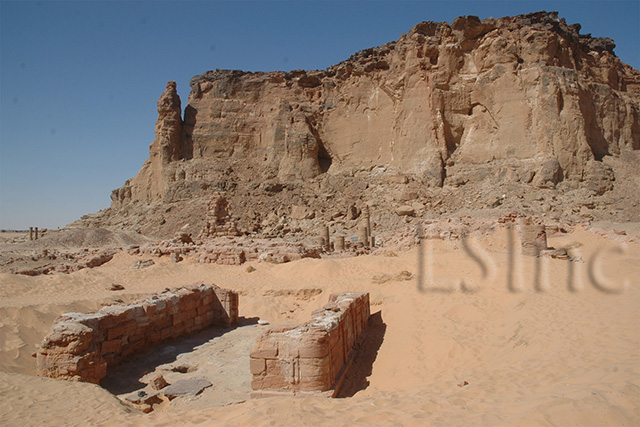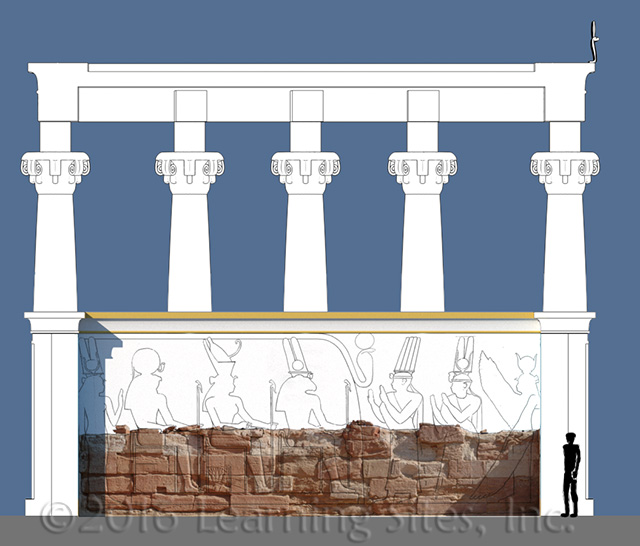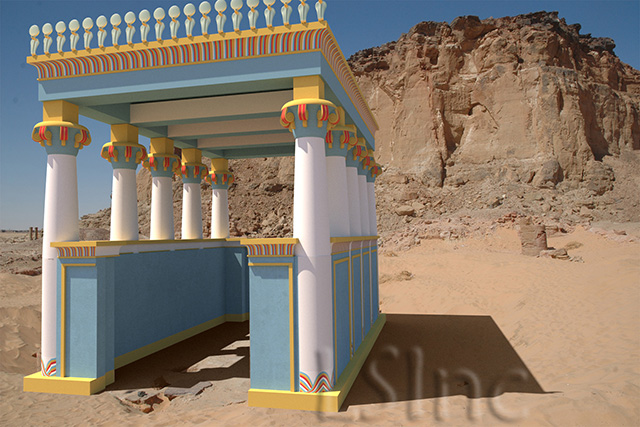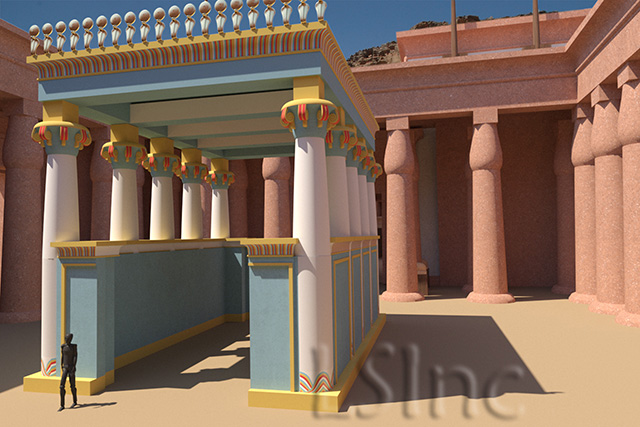 Periodic rest stations known as "kiosks" were built in or near temples at Jebel Barkal. In the kiosks, priestly bearers could set down the bark (a large model of a boat, a ritual substitute for the boat in which the god was thought to traverse the heavens) on secondary stands, rest for an interval during the barks "voyage," and perform rituals. In the mid-1st century CE, such a kiosk (c.7.85m x 10.82m) was built in the middle of court 501 of Temple B500 (see the excavated remains in the photo at the left; hover over to enlarge; photo copyright and courtesy of Timothy Kendall). Only the lower parts of its screen walls remain.
Periodic rest stations known as "kiosks" were built in or near temples at Jebel Barkal. In the kiosks, priestly bearers could set down the bark (a large model of a boat, a ritual substitute for the boat in which the god was thought to traverse the heavens) on secondary stands, rest for an interval during the barks "voyage," and perform rituals. In the mid-1st century CE, such a kiosk (c.7.85m x 10.82m) was built in the middle of court 501 of Temple B500 (see the excavated remains in the photo at the left; hover over to enlarge; photo copyright and courtesy of Timothy Kendall). Only the lower parts of its screen walls remain.
 There can be little doubt that the builders of this structure were the Meroitic royal couple Natakamani and Amanitore, who must be the king and queen pictured together in its fragmentary interior reliefs (see the reconstruction at the left; hover over to enlarge). Traces of light blue, yellow, and red pigment reveal that the structure was brilliantly, even gaudily painted. Its great width indicates that it must have had a roof made from cedar beams imported from Lebanon.
There can be little doubt that the builders of this structure were the Meroitic royal couple Natakamani and Amanitore, who must be the king and queen pictured together in its fragmentary interior reliefs (see the reconstruction at the left; hover over to enlarge). Traces of light blue, yellow, and red pigment reveal that the structure was brilliantly, even gaudily painted. Its great width indicates that it must have had a roof made from cedar beams imported from Lebanon.
 During 2015, LEARNING SITES began a 3D computer model of Kiosk 501 (see the rendering at left; hover over to enlarge). All the colors below the tops of the screen walls are actually attested. The shape of the column capitals is suggested by the survival of a large section of a single example.
During 2015, LEARNING SITES began a 3D computer model of Kiosk 501 (see the rendering at left; hover over to enlarge). All the colors below the tops of the screen walls are actually attested. The shape of the column capitals is suggested by the survival of a large section of a single example.
 A view of the kiosk showing it located in context of the courtyard of Temple B500 (hover over image to enlarge).
A view of the kiosk showing it located in context of the courtyard of Temple B500 (hover over image to enlarge).
(information extracted from interim site reports by Timothy Kendall, director of the QSAP excavations)